Take a tour of Wooster's many historic churches
WOOSTER − The city has a lot of churches.
Downtown and the surrounding area are home to nearly a dozen churches with a combined history of roughly 1,000 years.
To cover so much history in one night is quite the feat, and Main Street Wooster managed it Friday evening as dozens of guests walked through some of the area's oldest churches at the annual Historic Church Tour.
Christmas:The hunt is on for the perfect tree, a Christmas tradition for many
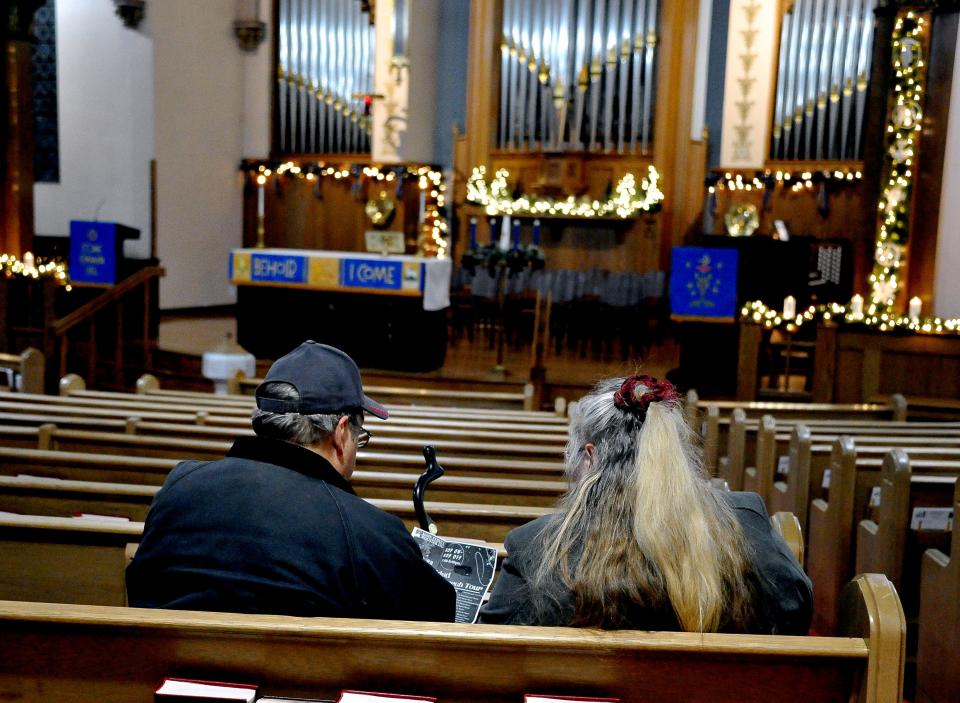
Buses shuttled guests to 10 different churches to enjoy local history, refreshments and Christmas decorations.
For those who could not make this one-night event, here is a sampling of the history the tour had to offer.
So, sit back with a mug of eggnog and enjoy a slice of Wooster history.
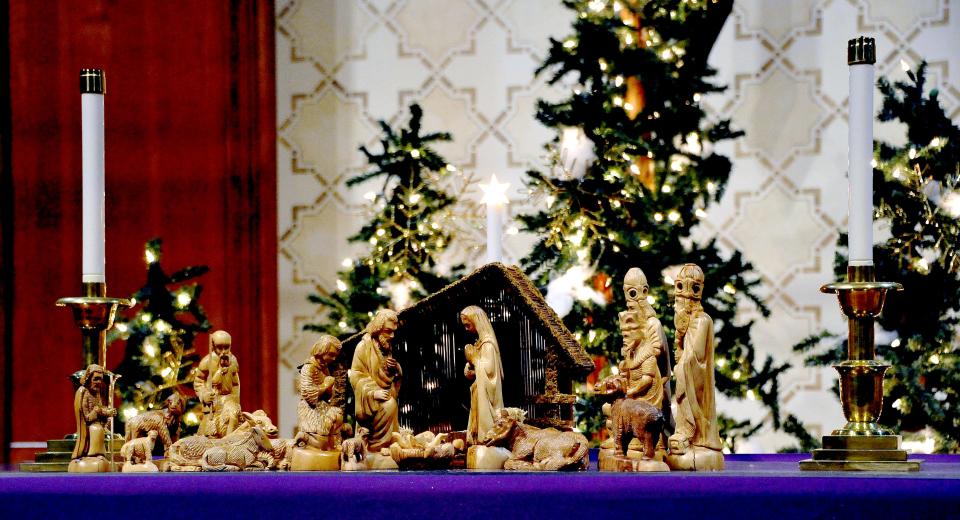
A stroll through the good ol' days
St. James Episcopal Church - 201 North Market St.
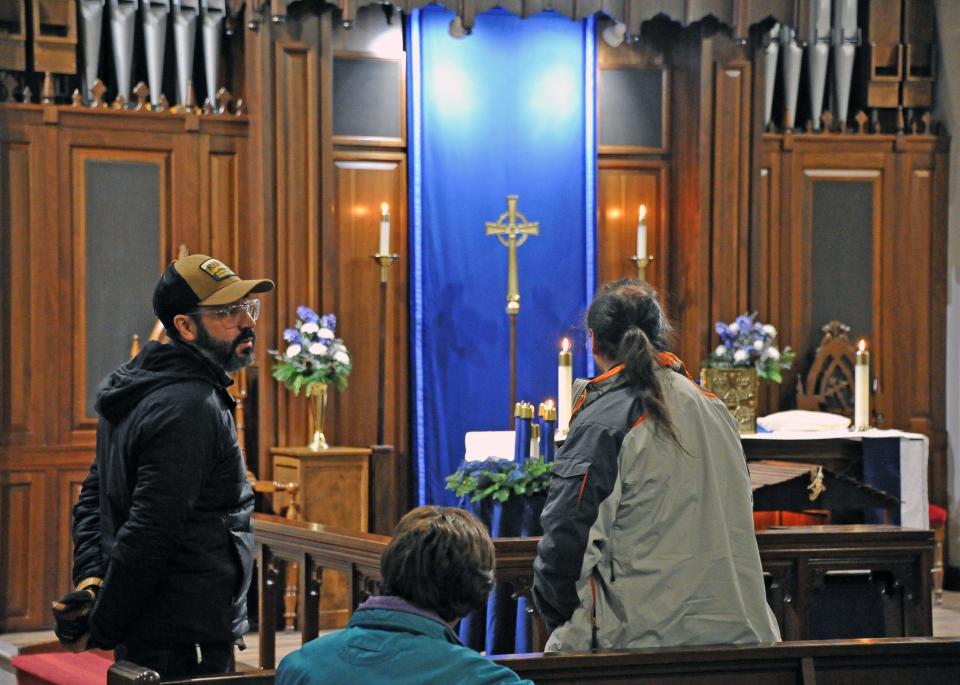
The second oldest church, St. James Episcopal, has roots going back nearly two centuries when the first Episcopal service was held in Wooster in 1833. That was seven years before the St. James parish was organized, according to the church website.
The first St. James church opened on Christmas Day in 1841 on South Street and was declared unsafe after it was damaged by fire nearly two decades later. A new church was consecrated in 1967.
Events:'A Christmas Carol' comes to Sonnenberg Village
Its current home on North Market Street was constructed in three phases starting in 1860 when the sanctuary and nave were built.
Part two came in 1928 when the parish hall was built.
The final phase was the $1.5 million construction and dedication of St. Nicholas Hall in 2018. It was named after fourth-century St. Nicholas of Myra who is known for his protection of the weak and defenseless.
This addition created more space for meetings, consolidated office space and made the choir room and classrooms accessible.
Since 1900, there have been 18 rectors and interim priests, including the current Rev. Evan Fischer.
Wooster United Methodist Church - 243 North Market St.
Wooster United Methodist Church began back when the city was a mere village in 1811, according to the church website.
The town was a stop on the American Episcopal Church preaching circuit, eventually leading to the Wooster Methodist Society's 1819 building of the Church of the Tabernacle located at North and Grant streets.
By 1839, the congregation outgrew its first church, so the original building was razed and rebuilt.
Tree:Cincinnati's Christmas tree came from Wooster. Here's how it happened
All was well in the church until 1872 when a group splintered from the congregation and founded Trinity Methodist. The group soon built the gothic-style Trinity Methodist Episcopal Church located at Market and Larwill streets.
When in 1886, the Church of the Tabernacle burned down, the Trinity Methodist pastor invited the tabernacle congregation to merge. They accepted the invitation and built a new church at East Larwill Street and North Market Street for $26,000.
Over the next century, an educational building, gymnasium, kitchen, library, classrooms, offices and a chapel were added.
The church was renamed the United Methodist Church of Wooster in 1968.
First Baptist Church - 246 North Market St.
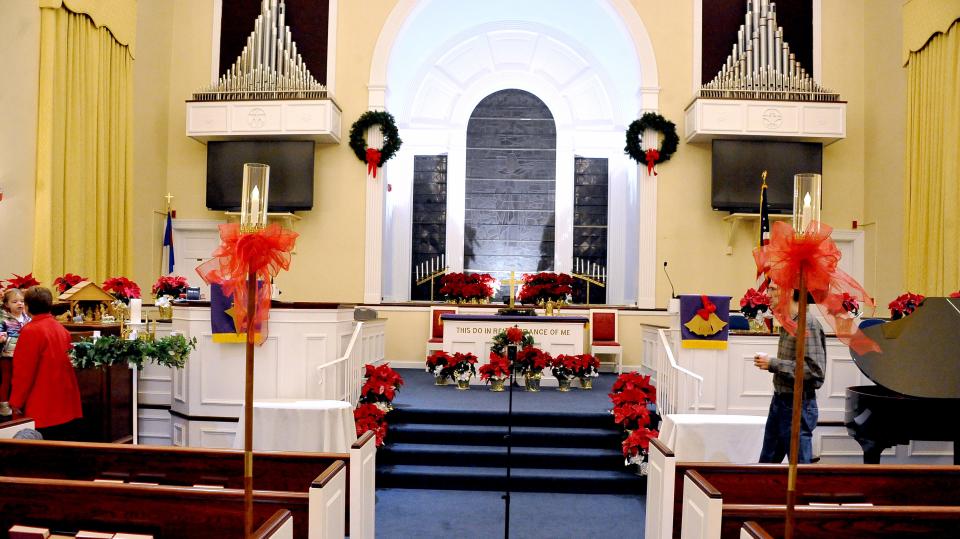
Officially organized in 1812 as Bethany Baptist Church, First Baptist Church is among the oldest, if not the oldest, congregations in Wooster, according to a Daily Record story from 2016.
First known as Bethany Baptist Church, its initial location opened at North Market and Larwill streets in 1839.
The structure that exists today remains mostly the same as the original construction except for the steeple, which was either removed or blown off during a storm before being replaced.
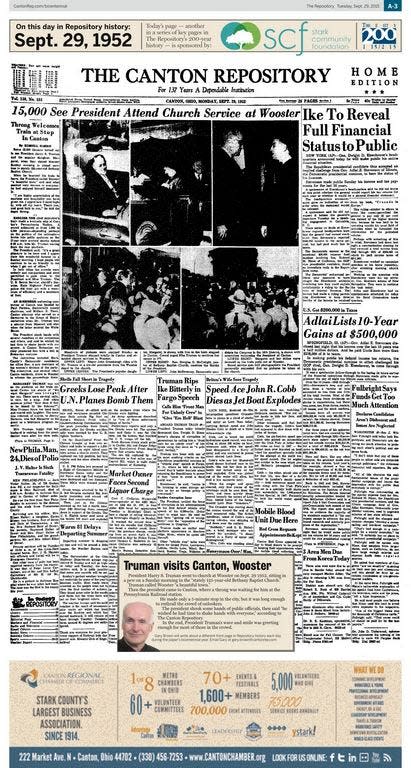
The church earned some fame in 1952 when President Harry Truman visited the site.
While First Baptist was an independent Baptist congregation for the first two centuries, it aligned itself with the Southern Baptist Convention in 2016.
Central Christian Church - 407 North Market St.
The story of Central Christian Church goes back to 1835 when 21 congregants charted Wooster Church of Christ. Its first pastor was J.H. Jones.
According to the church website, no definitive record of the congregation existed until May 1847, when the congregation built its first sanctuary at Walnut and South streets.
During its first 12 years in existence, between 1835 and 1847, the congregation grew from around 21 people to 100 and continued to grow in the decades after.
By 1885, the church had fallen on hard times. The number of congregants shrunk, and the building was in need of repairs.
From 1885 to 1899, the diminished group met in homes and at Miller's Hall while Charlotte Reid used her personal influence and labor to build the church on Buckeye Street in 1891.
Eventually, the congregation needed to relocate to a larger building, so the church bought land behind the Buckeye Street property where they dedicated a new brick colonial sanctuary.
First Presbyterian Church - 621 College Ave.
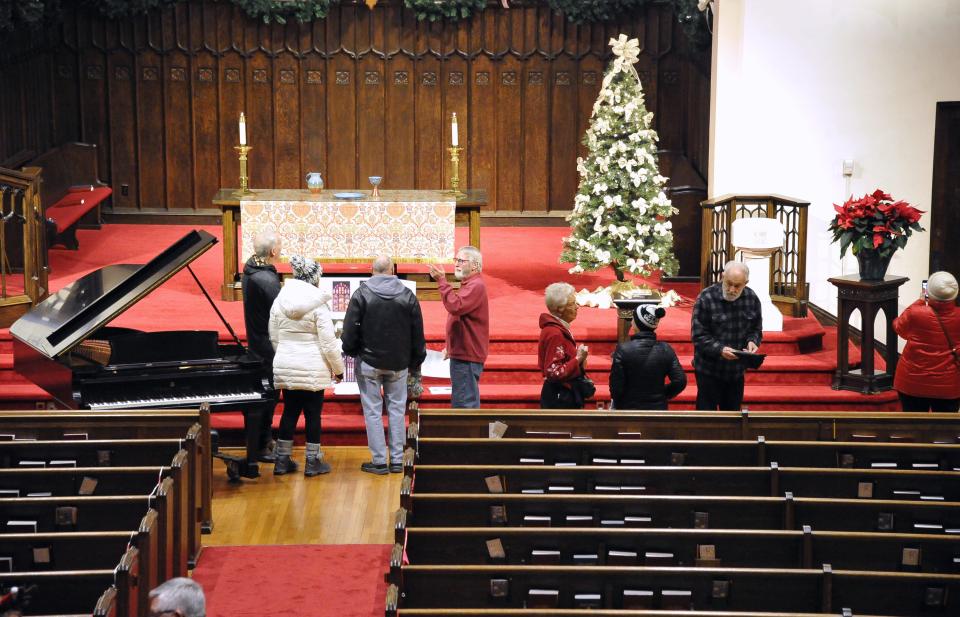
As with most Wooster churches, First Presbyterian goes back to the early 1800s.
In 1815, 15 Scottish and Irish immigrants built a small brick building on West Liberty Street for Mass, according to the church website.
In 1848, John and Elizabeth Christmas donated land at North Walnut and West North streets where the second church would be built.
By 1927, construction on the neo-gothic building seen today began at College Avenue and East Bowman Street. There, the present sanctuary and related structures were built.
St. Mary of the Immaculate Conception - 527 Beall Ave.
Few Catholics lived in the Wooster area by 1812 and typically were migrants from Maryland and Pennsylvania of German and Italian descent, according to the St. Mary of the Immaculate Conception website.
Although they faced suspicion, by 1817 they formed their own religious community that saw visits from out-of-town priests, including many from the Cincinnati area.
With about 15 charter families making up the church by 1846, they took the name St. Mary of the Immaculate Conception and started building a two-story brick church on Madison Hill near Tyler Grain mill.
Around the same time, Wooster became part of the Catholic diocese in Cleveland.
In 1864, a schoolhouse was built that enrolled 90 students in its first class.
The next 50 years were a time of growth. New land was purchased. A cemetery was built. The church was expanded to meet a growing congregation of 80 families.
In 1913, the church burned to the ground. It is thought a spark from a passing locomotive ignited the roof.
The nearly $29,000 cost to build a new church was raised, but the congregation chose a new location at Beall and Bowman streets, where August Imgard lived, a German tailor.
Once the property was purchased, Imgard's Victorian home was moved south and still serves as the parish rectory.
In 1918, the church was dedicated and consecrated by the bishop of Cleveland.
People to People Ministries - 545 Beall Ave.
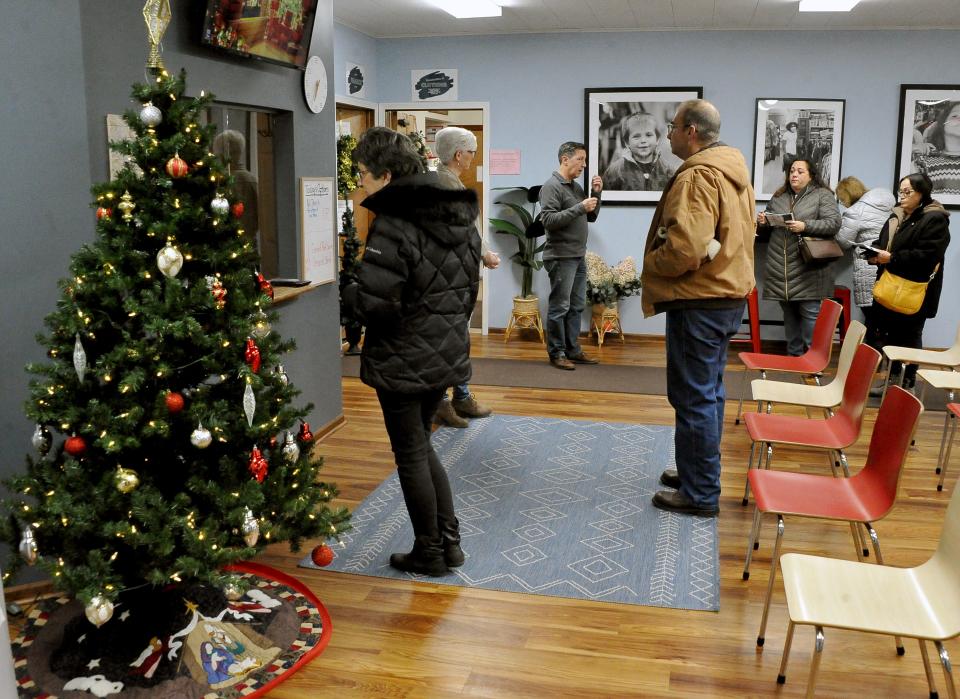
People to People Ministries is among the youngest in the city.
Established in 1978 by the Wayne County Ministerial Association and residents, its members help families facing emergencies ranging from food to shelter and clothing.
"The purpose of PTPM is to provide an immediate, realistic, and compassionate response to people with these basic needs when these needs are not being met through any other programs," according to its website.
The program is nonprofit and is funded via donations and fundraisers.
Wooster Seventh-day Adventist Church - 445 North Bever St.
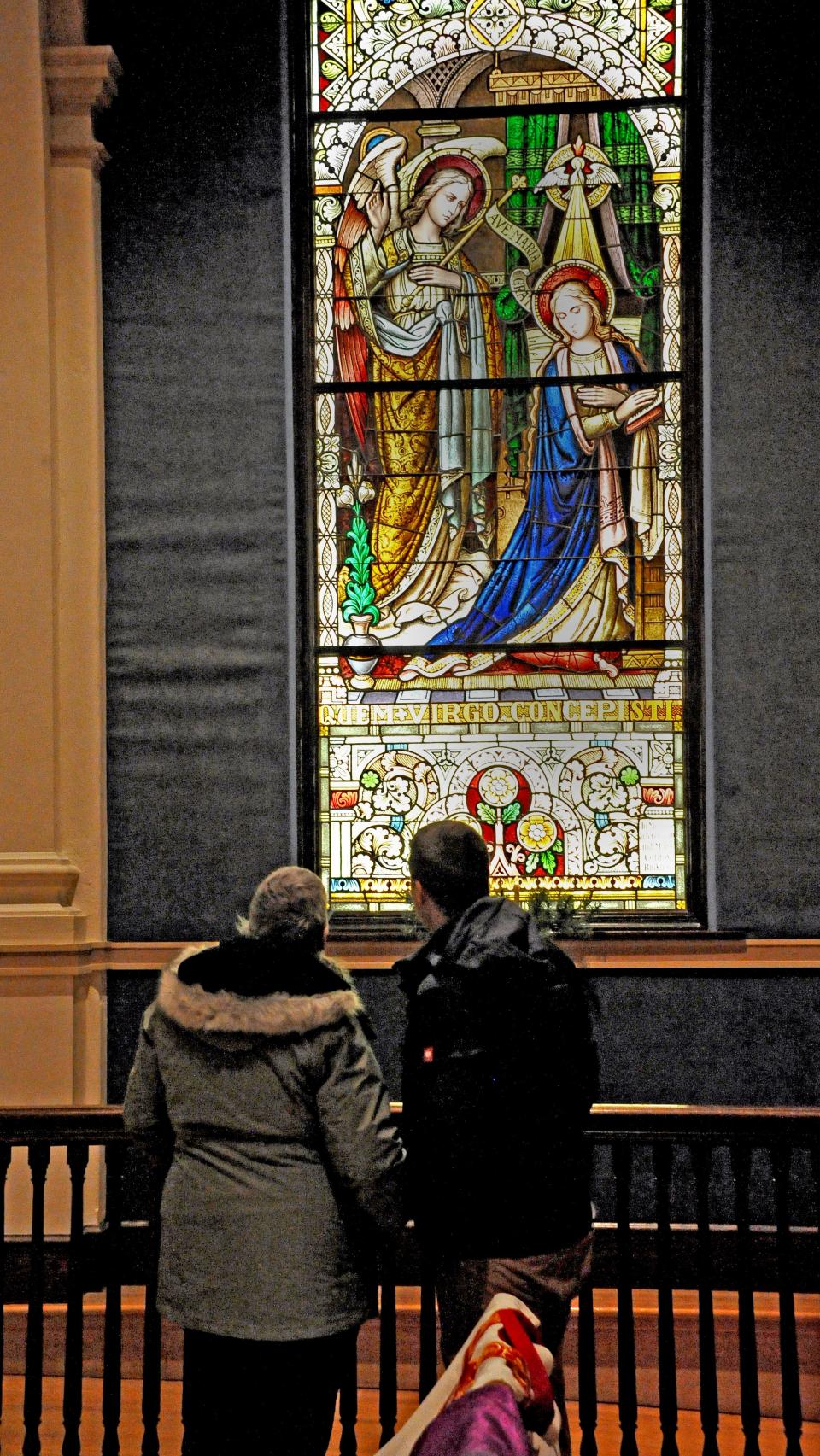
The original church building was constructed in 1868 for the United Presbyterian Congregation and remained unchanged until the 1940s when lighting destroyed the steeple.
It wasn't until nearly 100 years after its construction that the Wooster Seventh-day Adventist congregation bought the building in 1962, according to the church website.
The church boasts the oldest pipe organ in Wayne County that still has its original parts. As of 2022, it is a century old.
Installed in 1922 by Schantz Pipe Organ Company of Orrville, it lacks the usual electronic components found in modern organs.
This article originally appeared on The Daily Record: A walk through time: Wooster's diverse church history

